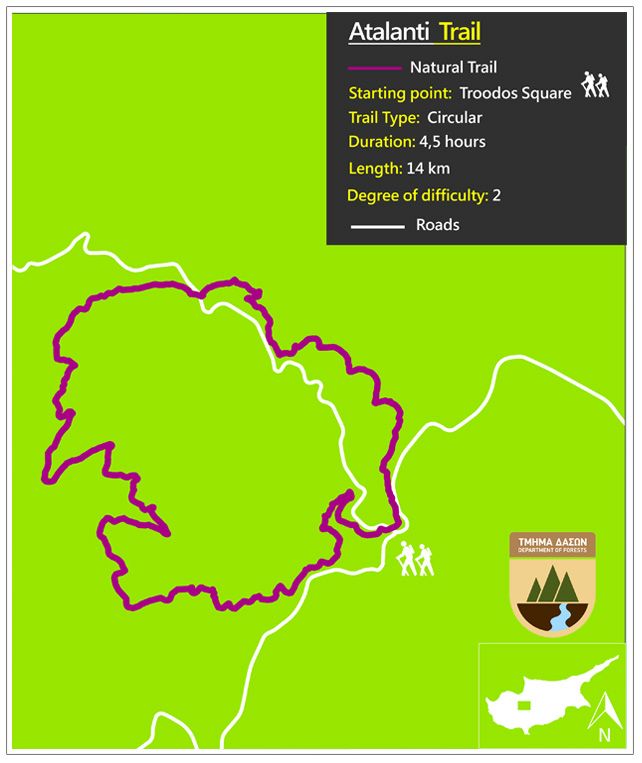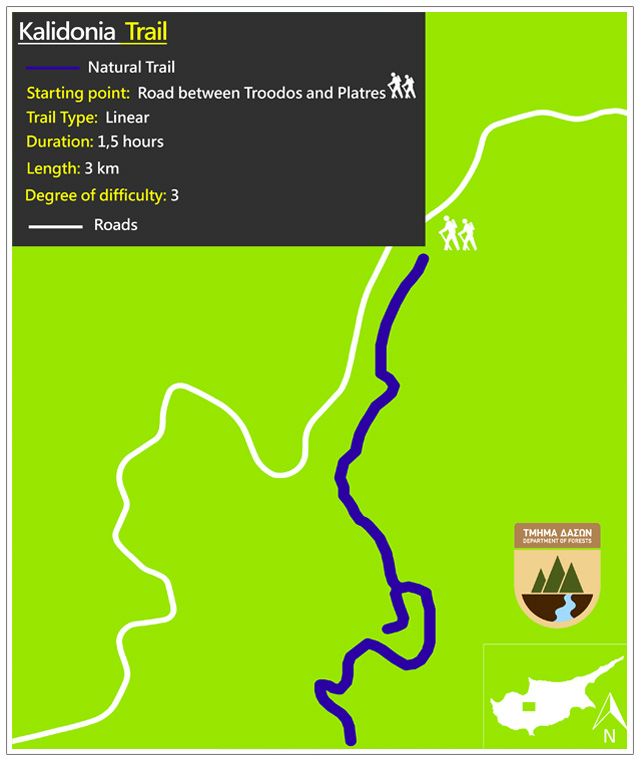TROODOS MOUNTAINS
Troodos Villages

PEDOULAS VILLAGE
PEDOULAS VILLAGE
Located in the Troodos mountains, in the Marathasa Valley of the Lefkosia (Nicosia) district, the village of Pedoulas sits at an altitude of 1.100 metres. It can be reached from Lefkosia by following the E901, then the B9, followed by the E908, and finally the F960.
Pedoulas sits amidst orchards and is particularly known for its cherries and the products made from the fruit.
The village is very significant in religious terms thanks to its important church of Archangelos Michael (1474), which ranks among the most impressive Byzantine churches in Cyprus with its amazing frescos. The church is part of the route of 10 Byzantine churches, which are included on the UNESCO World Heritage List. Close to the church is the Pedoulas Byzantine Museum, which was established in order to house and preserve icons and artefacts from churches in the region, with exhibits dating from the 12th century.
Its other interesting sites include the Folk Art Museum, which exhibits the villager’s daily way of life, customs and traditions of the past, and the natural spring, which is said to hold the key to longevity. Many visitors enjoy a refreshing drink of water from the spring when they pass through the village, or stay for a while at one of its quaint hotels.

KAKOPETRIA VILLAGE
KAKOPETRIA VILLAGE
Located in the Troodos mountain range, in the Solea Valley of the Lefkosia (Nicosia) region, the village of Kakopetria can be reached from Lefkosia by following the route E901, then the B10, and finally the B9.
The pretty village is a popular summer resort, thanks to its charming character and breathtaking scenery of pine forests that stretch across the Karkotis Valley. As such, it is ideal for agrotourism.
The old quarter of the village - with its narrow, stone-paved alleys - has been declared a protected heritage site, and its two-storey houses with their wooden balconies have been restored.
The Church of the Saviour’s Configuration (Metamorfosis tou Sotiros), which is built in the centre of the old village is worth visiting, whilst the church of Agios Nikolaos tis Stegis (St. Nicholas of the Roof) is located 5 km from the village. It is considered one of the most interesting Byzantine churches on the island, thanks to its painted murals that date from the 11th to the 17th century.
The village also has several other interesting sights, including the Linos Musuem and Olive Mill museum. The watermill ‘Mylos tis Gonias’ used to grind barley and grain from 1754. It closed down after the Second World War, and was restored in 1980.

OMODOS VILLAGE
OMODOS VILLAGE
Located in the Lemesos (Limassol) district, the pretty, wine producing village of Omodos sits at an altitude of 800 metres on the Troodos mountain range, in the beautiful area of ‘Krassohoria’, just 42 km from Lemesos town. The village can be reached by following the E601 route, or by following the B8 route, then the E802 route and thereafter, the F825 route. Omodos is one of the most traditional and charming villages on the island.
The village has existed since the Frankish period and is marked as ‘Homodos’, and ‘Homoclos’ on old maps, with its name originating from the Greek word for street - ‘odos’.
Famous for its wine, Zivania spirit, handmade narrow-knit lacing and ‘arkatena’ bread, its quaint environs are perfect for agrotourism.
Despite its small size, Omodos has many interesting sights. Located within close proximity of one another are the cobbled square, old stone-built houses, local wineries, a Medieval wine press and the monastery of Timios Stavros (Holy Cross), with its old icons and impressive woodcarvings. There is also a museum dedicated to the National Liberation Struggle, as well as a centre for the preservation of narrow-knit lacing, and an Icon Museum.
Every September 14, the village holds one of the biggest religious fairs on the island, dedicated to the Holy Cross. The celebration lasts for three days, and vendors gather in the beautiful square in front of the monastery to sell their wares. The square is also the scene of many other events during the summer and Easter.

LOFOU VILLAGE
LOFOU VILLAGE
Located in the Lemesos (Limassol) district, the tiny village of Lofou sits at an altitude of 780 metres, just 26 km from Lemesos town. Lofou can be reached by following the B8 route and then the F617 route, or by following the E601 route, and then the F617 route.
The village takes its name from its position on top of a hill (‘lofos’), and has retained its name since Byzantine times. It is renowned for its pretty, old architecture, and the many winding, cobbled streets.
The leafy environs of this picturesque and traditional village are home to grapevines and almond trees, offering agrotourism in tranquil and scenic surroundings.
Among its interesting sights are a small agricultural museum, the old school of Lofou, and the traditional faucet of Elitji, dating back to 1842. The faucet is where the villagers of Lofou used to collect water in the olden days, and was an important part of their daily life.
The village also has two religiously significant monuments; the 19th century village church dedicated to the Annunciation of Virgin Mary, and the nearby small chapel dedicated to Prophet Elias, whose icon is believed to have miraculous powers to stop the rains from causing damage to the grain crops.
At the end of September, the village celebrates its harvest with a Grape Fest, where visitors can watch the locals make traditional delicacies from grape juice, and sample them with their compliments. There is also a programme of folkloric entertainment, as well as wine tasting.

KALOPANAYIOTIS VILLAGE
KALOPANAYIOTIS VILLAGE
Located in the Troodos mountain range, in the Marathasa Valley area of the Lefkosia (Nicosia) district, the village of Kalopanagiotis is 70 km from Lefkosia and can be reached by following the E901 route, followed by the B9, the E908 and finally, the F958.
Kalopanagiotis is one of the most beautiful resorts on the island with its sulphur springs, traditional architecture and panoramic valley views, and is ideal for agrotourism in its peaceful surroundings.
The village’s name means ‘good Panayiotis’ in Greek, after the first inhabitant Panayiotis, who built his house near the Agios Ioannis Lampadistis monastery. The Monastery itself is on the UNESCO World Heritage Site list, and features three Byzantine churches with well-preserved frescos dating back from the 9th to the 15th century.
Interesting sights include the Venetian bridge and the Kykko watermill. The 16th century bridge was constructed from traditional stone, and until recently served as the only access between the village and the monastery. The watermillhas been declared a ‘heritage monument’ by the Cyprus Department of Antiquities, and is an imposing site, characteristic of architecture of the pre-industrial period.
Kalopanagiotis’ charm can also be felt in its other old chapels and churches, the quaint, cobbled streets, and footpaths that lead to beautiful nature trails.

PLATRES VILLAGE
PLATRES VILLAGE
Located in the Troodos mountain range, in the Lemesos (Limassol) district, the village of Platres sits at an altitude of 1.100 metres. It can be reached from Lemesos by following the B8 route, and then the F825 for Kato Platres.
The picturesque village resembles an amphitheatre, with the lower part of the village having one altitude and the upper part having another, thus separating it into Pano (upper) and Kato (lower) Platres. It is a popular holiday destination and offers accommodation in quaint hotels.
There are various versions of where the village takes its name; from a ‘platria’ (saleswoman) who lived there; from the French word ‘platre-s’ - (‘white plaster’); from monks in white known as ‘Platrai’ during Frankish times, or from the word ‘platsa’.
Aside from the nature trails, Platres has one of the highest waterfalls in Cyprus - Caledonia - believed to be named by English or Scottish visitors to the area in 1878. The village is also filled with charming old buildings, and has a winery in Kato Platres.
Visitors will also enjoy its unique attractions, which include a chocolate workshop, an adventure rope park, and an exhibition at its Cultural Centre which incorporates old photos of the village, and of the Greek poet Giorgos Seferis.

ARSOS VILLAGE
ARSOS VILLAGE
Located in the Lemesos (Limassol) district, the picturesque village of Arsos is built on the slopes of Laona mountain at an altitude of 850 metres, and just 42 km from Lemesos town. The village can be reached by following the A6 route and then the E601 route.
Arsos has practised the tradition of winemaking since ancient times, having developed into a large wine-producing village with a rich viticultural history.
Its name is believed to either come from the Holy Alsos (grove) of the Goddess Aphrodite, where the village is built, or its status as one of the four towns founded by Ptolemy Philadelphos in honour of Arsinoe.
Interesting sights include the Folk Art Museum, the ‘Six Fountains’ nature trail (that joins six medieval fountains along the river), its churches and a winery. Arsos is also an idyllic destination for agrotourism.
The village holds a Grape Feast annually at the end of September to celebrate its harvest, where visitors can watch how the locals make traditional delicacies from grape juice, and sample them with their compliments. There is also a programme of folkloric entertainment, as well as wine tasting. A second major event is held annually on November 14, with a religious fair in honour of Apostle Phillipos - protector of the village, with traditional stalls.

GALATA VILLAGE
GALATA VILLAGE
Galata is located 60 kilometres west of Nicosia in the beautiful valley of Solea. It has an altitude of 620 metres above sea level.
It is built in the two banks of the River Klarios that crosses through it and it is literally drowning in green. It is conjunct with the neighbouring community of Kakopetria. Both these twin hamlets receive thousands of tourists throughout the year.
Galata is famous for its tasty fruits that it produces in large quantities, especially apples of every variety, apricots, peaches, cherries, damsons, grapes, and others, as well as a variety of fresh vegetables.
If one wants to enjoy a few unforgettable summer moments in Galata, he / she must sit at the village's plaza. There, in the shadow of the age-old oak and the plane-trees with the Kargotis (Klarios) River, he / she will have unforgettable moments.
The houses of Galata -both the modern and the traditional ones -possess grace and beauty. One is particularly impressed by the wooden balconies and the wooden stairs of the old, traditional houses.
The tiled, inclined roofs, the local stone with which the houses' walls are made, the latches and bolts, the gateways with their wooden transoms, all these are unfeigned witnesses of contrived folkloric architecture, which is unfortunately dying away as time goes by.
Chiefly however, what is found here is an excellent cultural heritage. The six Byzantine churches with the pyramid-like roofs and their rectangular tiles present to the visitor an unparalleled Byzantine architecture, mainly from the 16 th century››. (Journeys in Cyprus, G and M Karouze).
The History and Tradition regarding Galata -- the village's name
In very old times, there where legend merges with history, in the "Esso-Galata venue west of today's village, some shepherds lived along with their flocks. The people who lived in the lower lands, the "katochorites" (lower-village inhabitants), went there in order to buy milk. The people would say amongst them "lets go over there to the ‹galataes› (plural, milkmen) and buy some milk". Out of "galataes", always according to tradition, came the name Galata.
Another tradition reports that the first settlers came from Galatia of Asia Minor and were named "Galates" (Byzantine era). So their small settlement was named Galata.
In his Chronicle (Annals), Leontios Machaeras reports that Galata belonged to the feud of the "Regas" (king) since 1196.
Galata is again mentioned by Leontios Machaeras in his Chronicle: ‹‹ … Learn…. These Maria said to me…. who took care of Mr. Erricos de Giblet in the village of Galata… ››.
Thus we come to the conclusion that during the Frank Domination era Galata belonged to the De Giblet family.
In Mediaeval maps Galata is found marked under the name Golata and Galata (Iacomo Franco 1570, Galata).
This is what the Russian traveller, Vasiliev Barksy, wrote in 1735 regarding Galata:
He first visited Galata and then the village's monastry of Podithou as he prescripes it.Then he returned back to the village were he spend the night.
‹‹ I went to the nearest village, named Galata, and spent the night close to a Christian along with my companions, which were priests. Let it be known that the villages of Solea have very few Muslim inhabitants, the majority being Greek Orthodox Christians, with many churches and priests. This village is the most beautiful of all. It has many fruit-bearing trees and running water and it is located next to the aforementioned river Klarios ››.
The Village of "Lampadou"
It is not known where exactly the village of "Lampadou" was built. However, the inhabitants of Galata as well as those of the surrounding villages -by tradition -starkly believe that this village or small settlement was located close to the country church of St. George the "Perachorites", east of Kakopetria and to the left of the tourist road to Troodos.
"Lampadou" or "Lampadis" or "Lampadistos" has been the birthplace of two of our Church's Saints, St Herakleidios and St. John the "Lampadistes" (the Illuminator).
The following reasons reinforce and confirm the view that Lampadou was located in the aforementioned area.
• According to St. John the Illuminator's "Akolouthia" (service) of 1667, he came from ‹‹ the hamlet of Lampadou of the Galaton district ››.
• In an unpublished manuscript (Φ13 β) it was mentioned that: ‹‹ He was a Cypriot -St. John the Illuminator -from the region of the Solea district, from the village Lampadou ››.
• The Russian traveller Barsky who in 1735 spent one night in Galata, during his tour ‹‹ in all the monasteries of Cyprus ›› mentions: ‹‹ John -a saintly man -the Illuminator from the village of Lampadis, where the Saint was born and which now has been abandoned as I have ascertained when I was in Solea ››.
• One of the "Aposticha" (types of verses) that refers to St. Herakleidios goes like this: « Τόπους αμειβόμενος οι του Σωτήρος Απόστολοι προς Σολέαν ιθύνονται και δόξαν κηρύττοντες Ιησού του Λόγου , άχρι της Λαμπάδου , ένθα και εύρον τον φαιδρόν θείον και πάνσοφον Ηρακλείδιον , δοχείον καθαρώτατον και μύστην υπάρχοντα Ελληνικής διαθέσεως , όν διδάξαντες έλεγον , σέβειν ένα Θεόν ημών », narrating how the Apostles, preaching the Word of God, came to Lampadou and taught St. Herakleidios about Christianity.
• In the service of St. John the Illuminator of 1774, h is mentioned as descending ‹‹ from the village Lampadistou of Solea››.
• Sofronios, the former Metropolitan Bishop of Leontopolis writes in his 1935 opus "Hagiology of the Orthodox Church": ‹‹ Saint John the Illuminator, from Cyprus (October 4 th ). In no hagiographer have I encountered a memoir of him… He is celebrated in Cyprus, descending from Lampadou (a village by the hamlet of Galata) and thus having this name ››.
• At a small distance outside Galata there is a bridge called "giofyrin t' Aerakleidkiou", that is bridge of St. Herakleidios.
• There is a venue quite near Galata named "Moutte tis Lampadou" (nose or peak of Lampadou).
• In the Byzantine churches of Galata and Kakopetria there are frescoes depicting St. Herakleidios and St. John the Illuminator.
• ‹‹ Again the mention of a settlement under the name Lampas in the "district of the Galates" indicates that the settlement must have been in the Solea region (where the large village of Galata is) ››. (History of the island of Cyprus, volume II, Andros Pavlides).
St. Herakleidios
From the Hagiography of St. Herakleidios -and also from other sources -we can conclude that he was an idolater (heathen) and a son of a certain Hierokleous or Hierokles, a heathen priest. It is known that the ancient people in Cyprus, like the ancient Greeks, believed in the twelve Gods of Olympus.
When the Apostles Paul and Varnavas came to Cyprus in 45 AD to preach the Nazarene's religion, they passed by Lampadou that was close to Galata. Here the Apostles met the then young Herakleidios along with his father who -at that moment -was offering a sacrifice to the Gods. Hierokles invited them to take part in the sacrifice. The Apostles refused. They only asked to be shown the wrote to Pafos.
Hierokles allowed his son, Herakleidios, to escort the Apostles and show them the way.
As they were walking, the Apostles taught to Herakleidios the true religion of Jesus Christ and its superiority, in comparison with the religion he believed in. Herakleidios was thrilled with the new religion, became a believer, and was baptised. The Apostles ordained him as the bishop of Tamassos.
St. John the "Lampadistes" (Illuminator / torch bearer)
St. John the Illuminator descended from Lampadou, as his surname reveals, just like St. Herakleidios. ‹‹ … from the renowned island of Cyprus, from the village of Lampadou in the district of Galata››. (Costas Myriantheas St John the Illuminator)
He lived during the 11 th century. His parents were the priest Kyriakos and his mother Anna.
He was nurtured with the essence of the faith and learned the holy scriptures from an early age. Because of his great love for God, he dedicated himself wholeheartedly to Him.
When he was 18 years old his parents were pressing him to be engaged, forgetting that their son was the fruit of their prayers and pleas.
After the engagement, John decided to break his engagement and dedicate himself to God. He announced to the parents of his fiancee his irreversible decision. In spite their bitterness and their feelings of being insulted, they pretended that they still had loving feelings for him. They invited him to dinner and poisoned him and as a result John was blinded. The scene of this lethal dinner with the poisonous fishes that they offered to him is depicted in a large portable icon, which is found in his monastery in Kalopanagiotis.
He was now blind. But he says "If they have taken from me the eyes of the body, the eyes of the soul exist, so that I will praise the name of God with greater zeal".
With the help of a servant who had the same name as he did, he leaves Lampadou and ascends to the monastery of his fellow-villager, St. Herakleidios.
He lived three years of angelic, ascetic life "teaching everyone that -if they want- they are able to live 'close' to Christ".
He was 22 years old when he delivered his "snow-white soul" to the Lord.
WINTER SEASON



Troodos Mountains in the winter is a magical place to be. A beautifully clear atmosphere, the snow, blue skies and breathtaking scenery attracts everyone, including skiers and winter sports enthusiasts.
Read moreWINTER SEASON
Troodos Mountains in the winter is a magical place to be. A beautifully clear atmosphere, the snow, blue skies and breathtaking scenery attracts everyone, including skiers and winter sports enthusiasts. Mount Olympus lies at the summit of the Troodos Mountains and it's traditional local name, ‘Chionistra’, translated is ‘the snowy one’, and is very popular for snowboarders and skiing, whether they are beginners or pros.
Troodos Nature Trails
RELIGION AND UNESCO


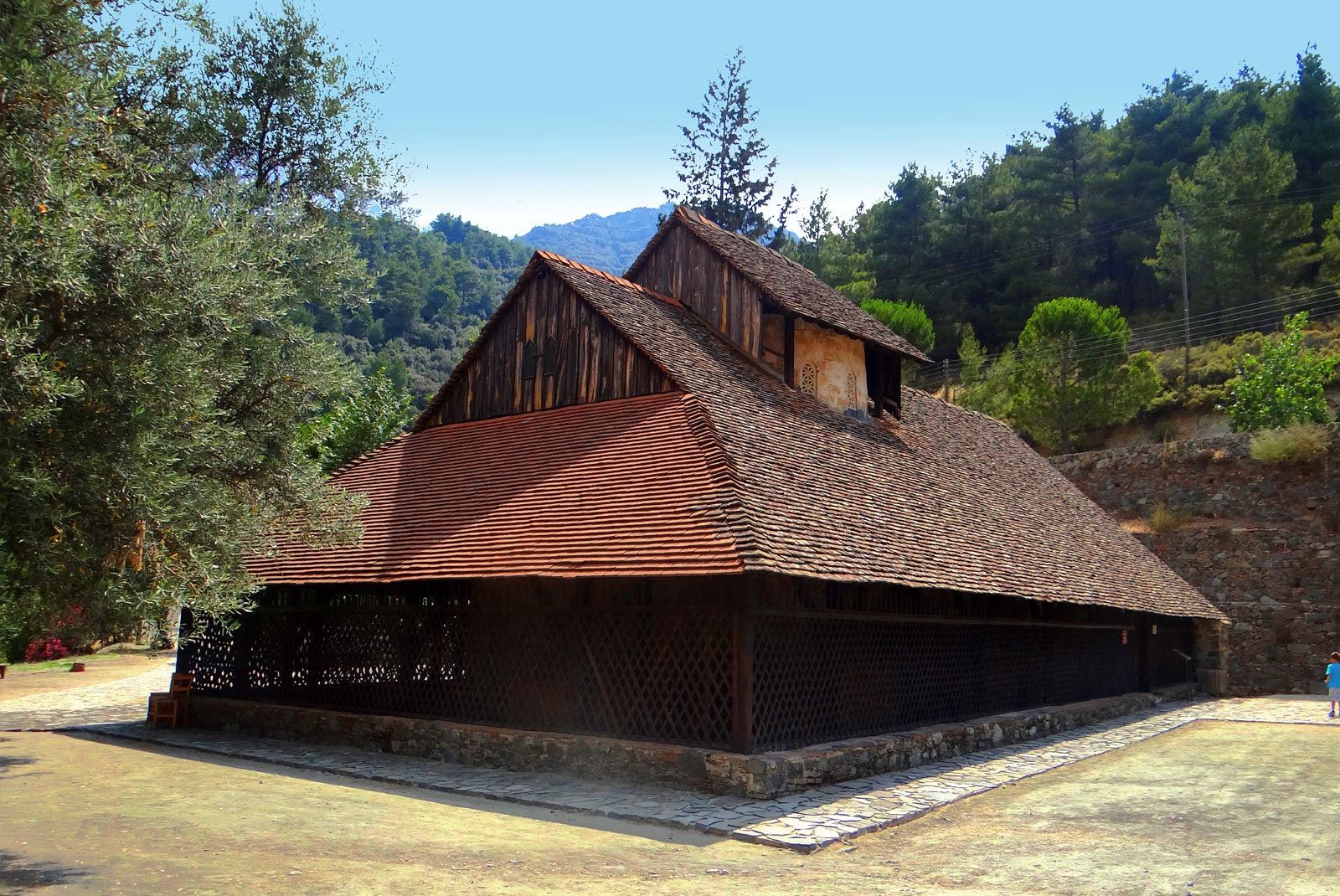
TROODOS CYCLING ROUTES MAP
- 1A Psilo Dendro (Platres) - Karvounas
- 1B Karvounas - Prodromos
- 1C Prodromos - Psilo Dendro (Platres)
- 1D Mikros Gyros Troodous
- 1E Troodos Square - Kaminouthkia - Psilo Dendro
- 1F Troodos Square - Kaminouthkia - Mesa Potamos
- 1G Troodos Square - Persefoni Trail - Kalidonia - Platres
- 1H Troodos Square Persefoni Trail - Kalidonia -Prodromos
- 1I Troodos Square - Karvounas - Kyperounta - Kakopetria
TROODOS MUSEUMS



Troodos has unique Ecclesiastical, Folk Art and Wine (old wine Press) Museums, which they are related with civilisation, culture and traditions. Hidden away in the Troodos pine forests, are Cyprus' famous painted churches with their colourful frescoes on walls and apses, superb examples of Byzantine art. Ten of these have been put on the UNESCO World Heritage List. Kykkos Monastery, the largest on the island, has an excellent Byzantine museum and a golden icon of the Virgin Mary, allegedly painted by St. Luke.
PICNIC AND CAMPING SITES
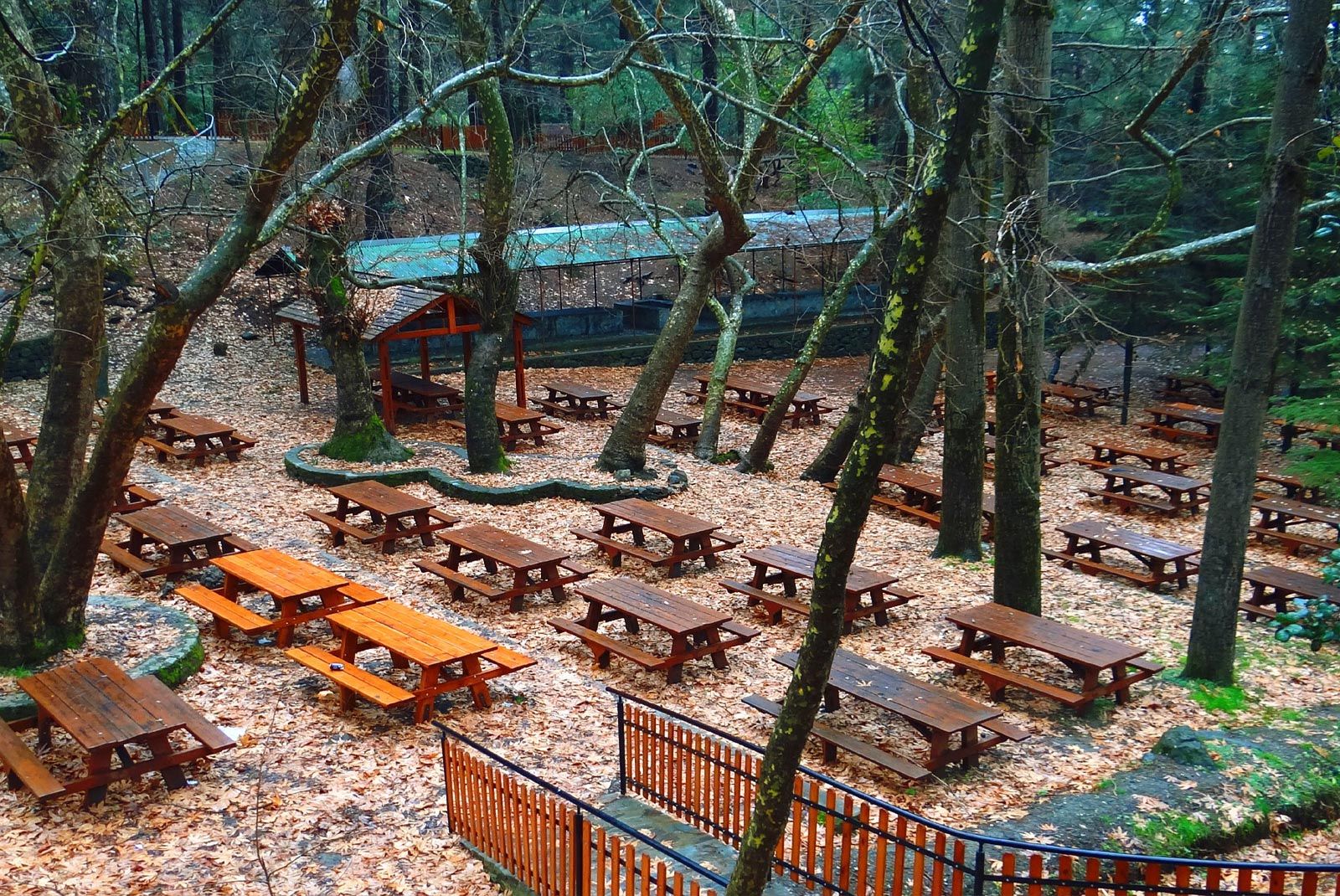

Troodos has plentiful picnic sites which lie under the umbrella of the Cyprus Forestry Department. They are located where access is easy, where there is shade and water.
Read morePICNIC AND CAMPING SITES
Troodos has plentiful picnic sites which lie under the umbrella of the Cyprus Forestry Department. They are located where access is easy, where there is shade and water. There are a range of facilities available; tables, sanitary facilities, playgrounds, barbeque sites, drinking water, car parks and others- all free of charge. Troodos has three camping sites where camping is allowed for a small fee per overnight stay. The sites offers basic facilities such as barbecue sites, potable water, benches, tables and washrooms. There are 5 camping sites in the state forests with a total capacity of 2,400 persons in which camping is allowed for a small fee for overnight stay. The Forestry Department manages three of these camping sites while the other two that are also situated in state forest land, are managed by other agencies. They provide facilities like barbecues, drinking water, tables and washrooms.

WATERFALLS



The Xantara Falls are found on the Trooditissa River (also known as Diplos Potamos) in the village of Fini which lies at 3,400 feet above sea level and is part of the state forest.
Read moreWATERFALLS
The Xantara Falls are found on the Trooditissa River (also known as Diplos Potamos) in the village of Fini which lies at 3,400 feet above sea level and is part of the state forest. The water falls from a height of 26 feet. Located on the outskirts of the village Platres in Troodos, Caledonia Falls is one of the highest falls in Cyprus. Water falls from a height of 40 feet. You can reach it via a path leading to it. The water which falls from the Mesa Potamos waterfall, constituting mainly gabbros rocks, falls from a height of 23 feet. In Platres you can see the Millomeri Fall, renowned for its natural splendour. Water here falls from a height of 50 feet. Some of the falls are hard to access since they have only been discovered recently.
DAMS


Troodos Mountains have natural river networks that flow out in the winter months into the surrounding dams and rivers in the wider areas of the island, in all directions...
Read moreDAMS
Troodos Mountains have natural river networks that flow out in the winter months into the surrounding dams and rivers in the wider areas of the island, in all directions, thus contributing to the island’s water levels which are very often extremely stretched during the intense heat at the height of summer. The dams are stocked with 17 species of fish. The most popular are: Trout, largemouth bass, carp, Tike perch, Roach, etc. Six dams in Troodos provide excellent fresh-water fishing opportunities throughout the year.These are: - Kafizes dam - Kalopanagiotis dam - Palaichori dam - Prodromos dam - Xyliatos dam - Asprokremmos dam.

FLORA AND FAUNA
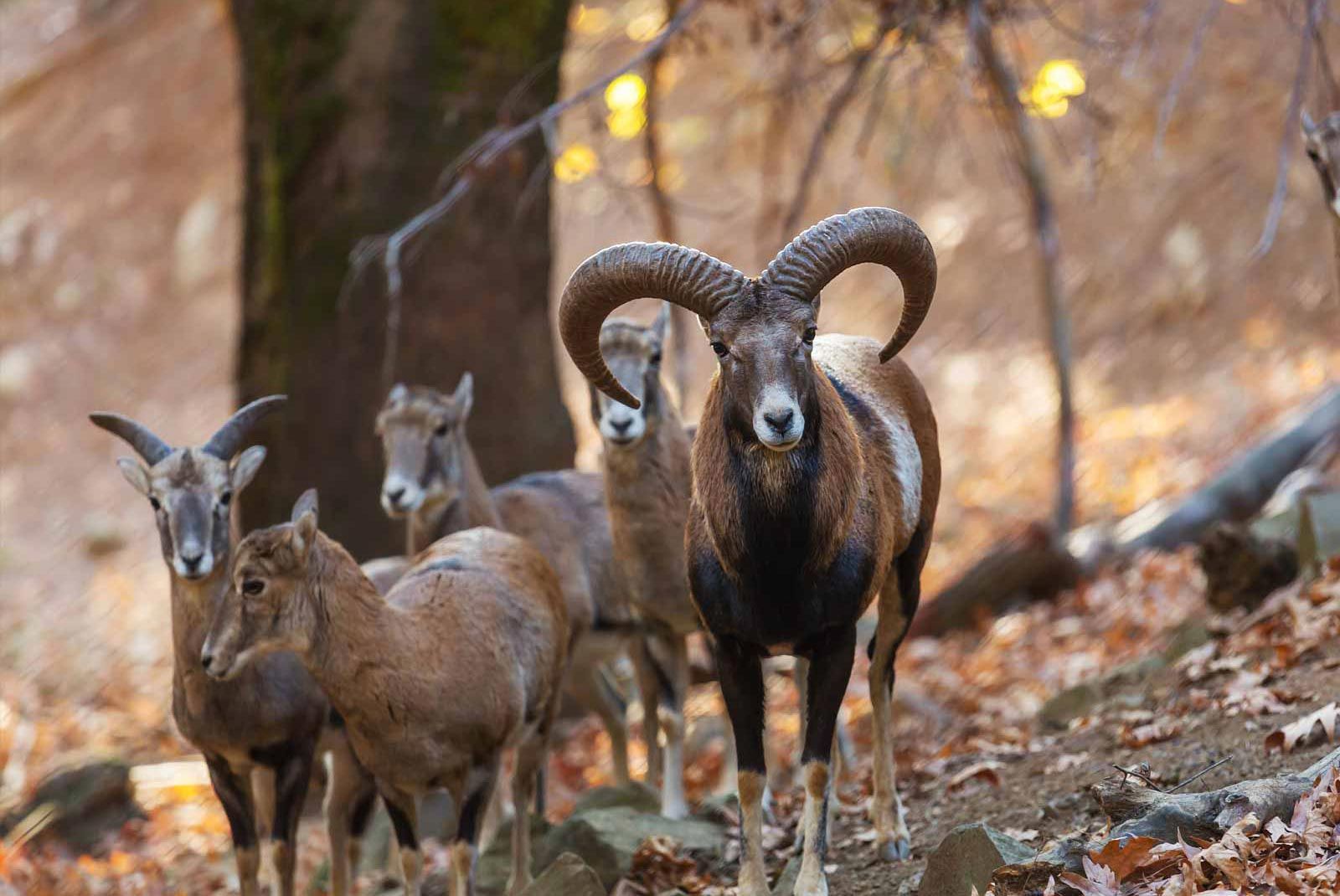


This area is renowned for its richness of flora and fauna, hence its name. It contains 750 species of plants.
Read moreFLORA AND FAUNA
This area is renowned for its richness of flora and fauna, hence its name. It contains 750 species of plants. The park animal life is protected here. The birds are of particular interest to nature observers: the Bonelli’s Eagle, the Griffon Vulture, the Scops Owl, the Cyprus Warbler, the Cyprus Pied Wheatear and many others. In the wider area you can encounter the moufflon (Ovis Gmelini Ophion), a species of wild mountain sheep with thick sinuous horns that lives there. The geology is unique in this region with an ophiolite complex created from oceanic crust 90 million years ago and is still well preserved and observable throughout the area.

